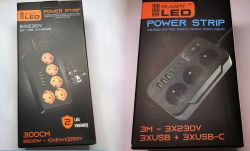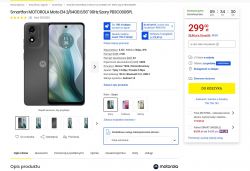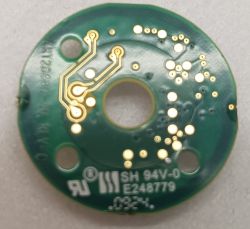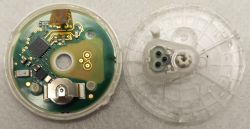I think it's my first post on the electrode after 16 years of registration O.o
It just so happens that I have been a long-time user of this system and I have completely mixed feelings, especially when it comes to conditions completely unrelated to technical ones. As I have a lot to do with electronics on a daily basis, the biggest magic for me is precisely the enzyme electrode, which is the only part of the device that is 'connected' to the body. The rest seems to be relatively graspable electronics: a precision ADC, probably temperature-compensated (the plastic housing is even thinner in the area of the primer NTCa), measurements stored inside the chip, which we can read via NFC and, more recently, via BLE.
The most interesting thing is precisely this BLE. For the past year or so, with the original manufacturer's app on my phone, I have been able to look at the screen and find out my sugar levels. Up to this point, the way BLE worked was completely incomprehensible to me: the BLE datagrams contain all the information (encrypted, the keys can be obtained by scanning NFC) about the measurements of the last few minutes, but were only used to display a push notification stating that the sugar level was too high or too low. To find out the numerical value of the measurement I had to perform an NFC scan....
There were a couple of guys who wrote unofficial apps that ran all communication over BLE and this was probably the motivator for the manufacturer to make such functionality, after X amount of time, appear in the official app. I suspect that otherwise, such functionality would only have appeared in the next generation of the device, which would have been correspondingly more expensive, well, because it would have had new functionality.
As far as I'm concerned, this is definitely a good thing: the built-in controller from Texas has memory for 8 hours of measurements, so in order for the doctor to issue the next reimbursement order, I have to have a certain % of time covered by measurements in the official app in the previous period. You slept more than 8 hours: what a bummer, another % of time covered by measurements fell out, because after all, it was impossible to enlist after BLE.
tmf wrote: Then produce and earn...
.
I realise the logic of this sentence: R&D costs money, customer service costs money, certification costs a lot and a thousand other things cost money too, but this price seems to be mainly due to a rather heavily regulated market: you need a lot more resources and documents than a simple CE to be able to bring this to market. It's a pity that there isn't much of a legal possibility for me to buy such a device on my own responsibility without all those receipts. I realise that quite a few people wanting to save money would do so, and then the courts would be flooded with a wave of lawsuits claiming that the sensor cheated me and killed me. So bad and so bad.
Anyway, it seems to me that the manufacturer has a lot of margin: in my case, in a large proportion of cases, the sensor is not able to work for the claimed 14 days. Most often it "breaks down" when:
- I have a fairly low sugar level for an extended period of time, and then I eat something sweet: the level starts (not in every case) to rise rapidly (i.e. probably some voltage drops or rises rapidly).
- I have very low sugar levels for a long time (so probably some tension is permanently low or high).
By making a complaint I will almost 100% end up sending another sensor, which I can use new 14 days with the requirement to return the previous "faulty" one. I don't think I have ever encountered such a complaints policy.
At least since I use the original sensor "reader", which is a small device with NFC with which I can scan the sensor and see the result on the screen. When I used my phone, complaints were rejected because, as is generally known, the BLE receiver certainly messed up the sensor. In official language, however, this is using an incompatible smartphone. The manufacturer has a list of "supported devices" that includes most iPhones, quite a few Samsungs and a few other models. My phone is outside this list. The previous phone was on this list and, interestingly, 8/10 attempts to scan NFC ended in a connection error, but did not result in a rejected claim. The new one is off the list, no connectivity issues, but there are issues with complaints. Either way, the average 'spoilage' frequency, for each of the three devices (official reader, supported phone and unsupported phone), is unlikely to have changed significantly.
Marcin125 wrote: This is what I did not understand....
The choice is simple: either a human life is saved or the whole world is saved.
.
Well, exactly both.
For reasons I don't know, in some countries, the manufacturer is obliged to collect (I'm not sure if they recycle, but it seems to me that with the right scale of collection, it could be worthwhile) used devices, but not in Poland. As a curiosity: there are not even really precise guidelines on how one should deal with a used sensor, as it is a composite of medical waste and used electronics. Once under a Facebook post:
Abbott FreeStyle wrote: The used FreeStyle Libre 2 sensor should not be disposed of with municipal waste. Separate collection of used electrical and electronic equipment is required in EU countries.
⚠️ Note: Sensors contain batteries that cannot be removed, so do not incinerate them.
Please remember to dispose of them properly! 🌿🔧🌍
<br/span>
Someone asked how to dispose in such a case and got in response:
Abbott FreeStyle wrote: Welcome ***, according to the User's Guide the sensors must not be disposed of with municipal waste. In the countries of the European Union, separate collection of used electrical and electronic equipment is required. As the sensors may have been exposed to body fluids, they can be wiped down before disposal, for example with a cloth moistened with a mixture of one part household bleach and nine parts water. Should you have any further questions, we remain at your disposal. Best regards! 😊
.
The kit itself for 'mounting' the sensor in the body is also interesting. The kit consists of two parts: one is the electronics with the applicator, which does not appear to be sterile, and the other is the electrode with the needle that inserts it into the body.
This is what the electronic part and its applicator look like:
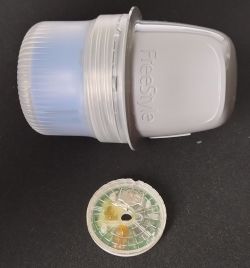
.
This is what the electrode and its transport packaging looks like.
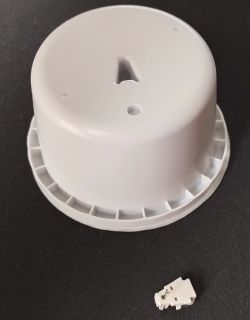
.
And this is what the rubbish looks like after the sensor has been installed.
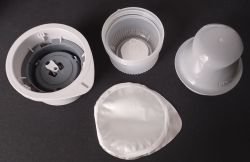
I leave it to the reader's own judgement as to whether this could somehow be handled better. Leading perhaps, however, to the answer I would like to get: Abbott in the West launched a third version of the device some 2/3 years ago (a fourth version has already been announced for 2022) and boasts, among other things:
Abbott wrote: . The FreeStyle Libre 3 System was designed to be more sustainable for the environment with a 41% reduction in plastic use and 43% reduction in carton paper.1 The new sensor design aligns with Abbott's continued commitment to waste reduction.
How is it that we have version 2 all the time? That's a good question, too, but since our National Health Service subsidises 70% or 80% of the price all the time, maybe it's not worth launching a new product for the time being since business is booming. All the more so as Freestyle Libre 2 is the only glucose monitoring system that is, in a way, unconditionally subsidised: other systems can only be reimbursed to a person who, for example, has a problem with not having low blood sugar (or other additional attractions that may be associated with diabetes), which may simply be dangerous. FL2 users are actually only required to use the sensors quite sensibly.
Wow, what an elaborate piece of writing I've come up with.

.



